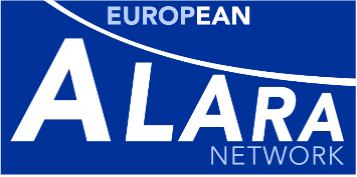Newsletters
What is it for ?
The EAN produces a regular ALARA Newsletter, widely distributed (especially in Europe), to provide a link between all those concerned with ALARA, mainly the health physicists, but also the managers, the radiation protection organisations, the research bodies, the regulatory bodies, the trade union representatives and the medical doctors. This Newsletter intends to reflect some major aspects of the ALARA life in Europe: evolution of regulations and judicial precedents, results of research, description of existing databases, analyses of dosimetric data, authorities and utilities ALARA programmes, available ALARA tools, need for ALARA improvements, lessons learnt from incidents, and recommendations to EC coming from the panel sessions of the EAN Workshops. Each issue includes one or two feature articles, as well as experts' viewpoints and ALARA information.
The content of the Newsletter has mainly been provided by EAN Members. However, the EAN Newsletter Editorial Board has decided to also encourage recipients of the Newsletter to submit article for inclusion in future issues. Submitted articles should aim to fit the current ediotorial line and will be selected on that basis.
- Proposal should be written in English language and send electronically to This email address is being protected from spambots. You need JavaScript enabled to view it.
You are free to translate the Newsletter: As in many countries the English language is not understood by some of the potential addresses of the Newsletter, it has been suggested it should be translated into other languages (Flemish, Spanish, French...). The Network is not able to do this centrally but, as the objective of the Newsletter is to facilitate as wide as possible dissemination of the ALARA culture, every participating organisation may translate the Newsletter and publish it as a 'common' publication with the European ALARA Network. Moreover any journal can translate one or more articles in its own publication using its national language, providing the original article in the Newsletter and authors are referenced.
Authors are solely responsible for their publication in this Newsletter. It does not represent the opinion of the community. The community and the Editorial Board are not responsible for any use that might be made of the data appearing therein.
- To subscribe to the Newsletter, please send your request to This email address is being protected from spambots. You need JavaScript enabled to view it.
 Download the 26th issue in PDF format
Download the 26th issue in PDF format
Editorial - EAN is moving forward!
In a brainstorming seminar in 2009, a number of colleagues reflected on the work done and the results achieved by EAN in the last 5 years as well as on future challenges and activities.
Consensus has been achieved on the values shared by those actively involved in the network on the effectiveness of cooperation and networking to improve the practical implementation of the ALARA principle. However, there is still room for improving the dissemination of experience and for better harmonisation in radiation protection policies and practical procedures with regard to the ALARA principle.
New challenges for ALARA are emerging: ICRP is reinforcing the role of optimisation in the implementation of the radiation protection system; new initiatives to maintain the high level of competence and expertise in the radiation protection field are developing on the national, European and international level (see the report on the ETRAP Conference in this Newsletter); the practical implementation of the ALARA principle in the medical sector (see paper Ginjaume et al. on the ORAMED project), as well as in existing exposure situations, in particular for radon and NORM (see paper Wichterey et al. on the 2nd EAN NORM Workshop), is gaining momentum and is seen more and more as a priority. The same is true for developing the ALARA approach to radiation protection culture and the dissemination of the ALARA values through education and training in all sectors. New technologies are arising in different fields which need our attention, for example, the reinforced use of ionising radiation for non-medical purposes (e.g. for security purposes). Among other topics, this has been an issue which was discussed at the 12th EAN Workshop in Vienna (see Summary and recommendations in the Newsletter).
